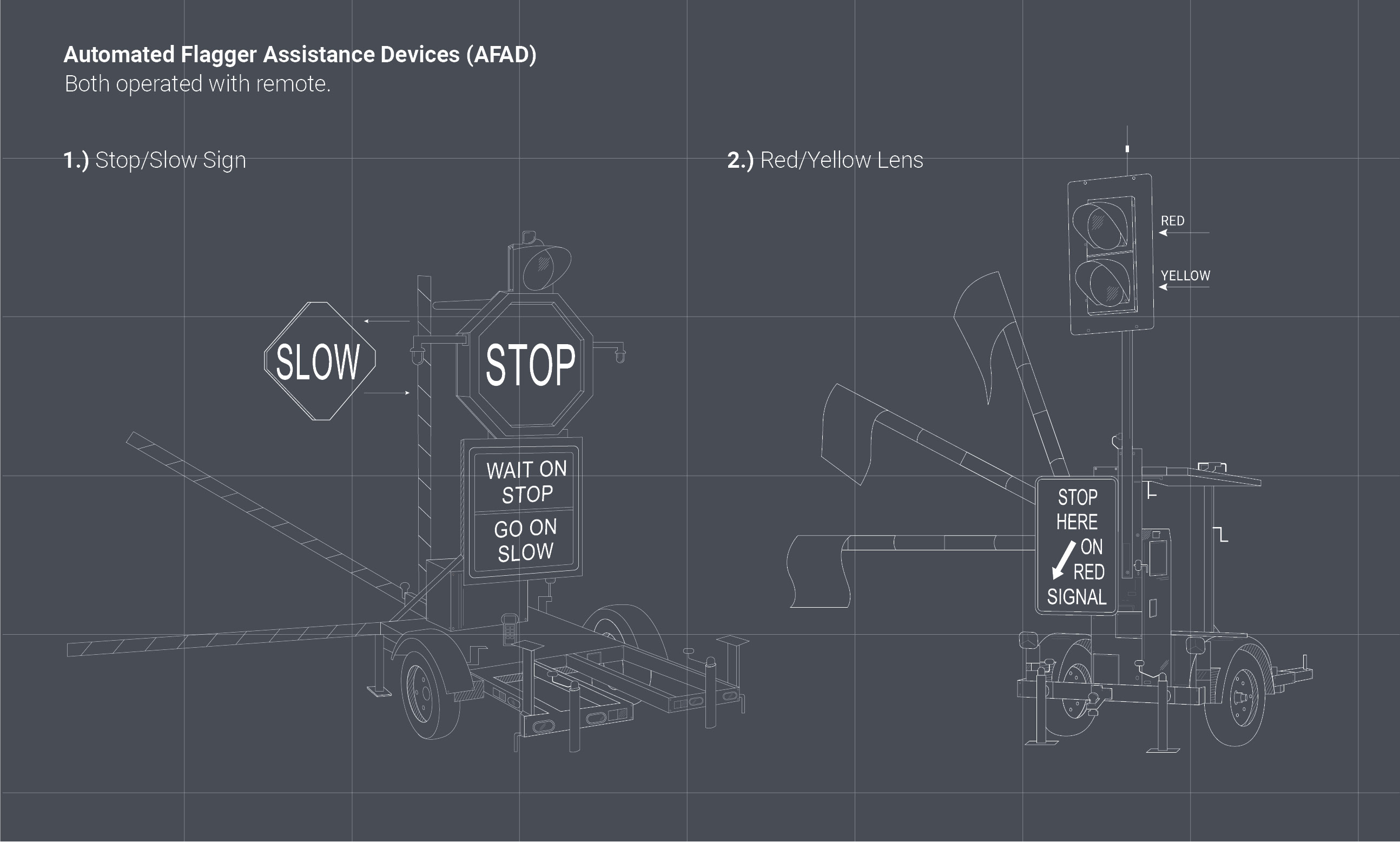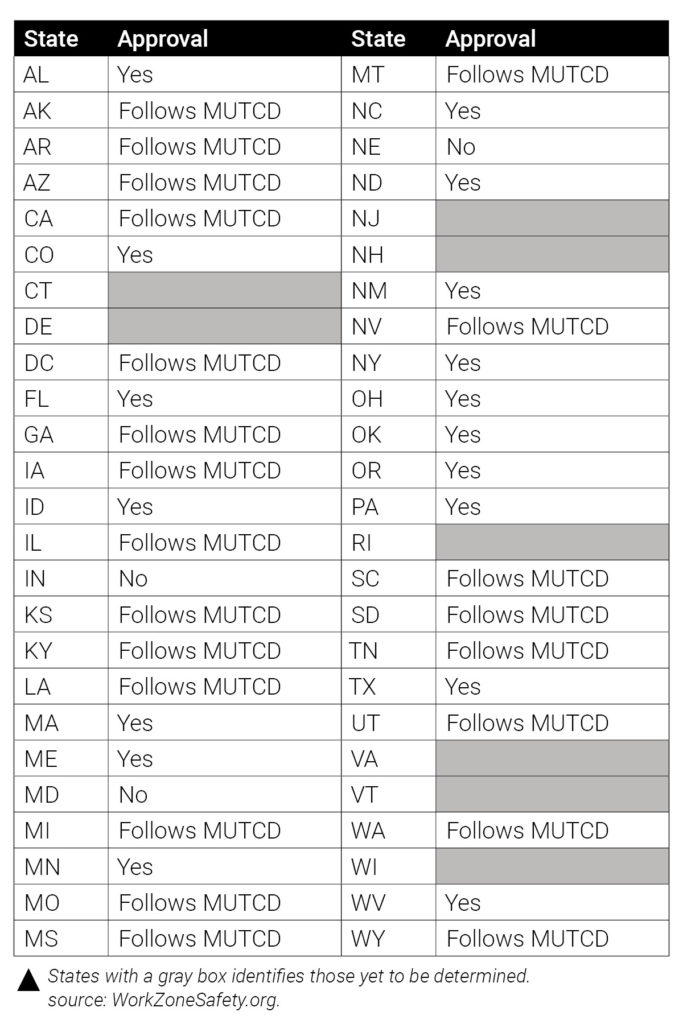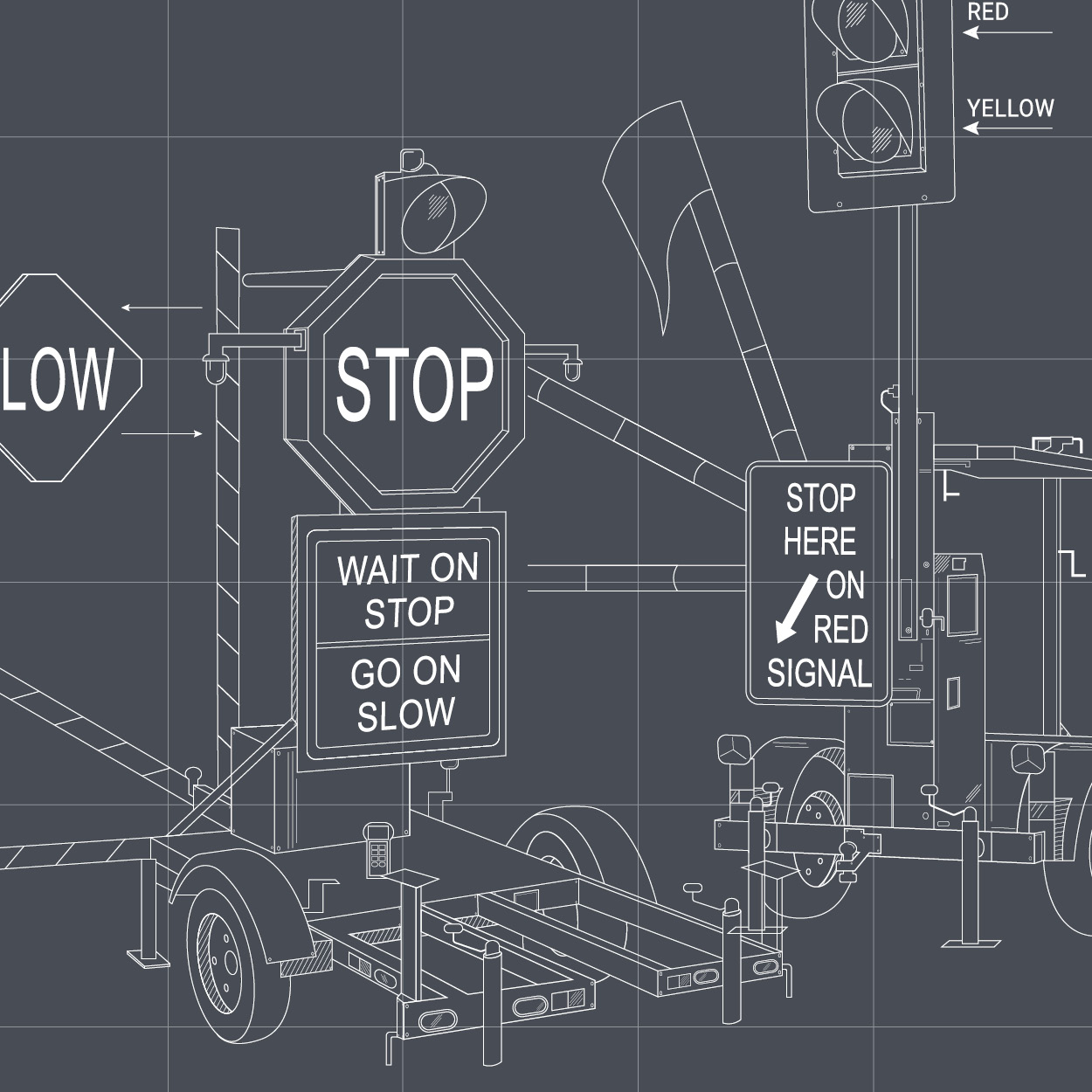Temporary traffic control is primarily an industry that requires human judgment and experience to complete the essential work. As the trade looks to the future, how can we scale and extend the capabilities of the temporary traffic control professionals? Could new technology create more work zones to continue improving our nation’s infrastructure?
Over the past several years, automated flagger assistance devices (AFAD) have been going through testing and implementation throughout the United States. This technology has become more popular, especially with the increasing rate of distracted driving. There aren’t a lot of statistics to identify if this new technology has helped decrease the rate of incidents, but there is data to show that motorists are paying attention to the new equipment when in use. These devices need to be managed by traffic control professionals. And though there are bodies still on site controlling the traffic, they are farther away from the traveling public in a safer location, which decreases excess risk factors when working on or near a roadway.
IN THE BEGINNING
North America Traffic, a privately-owned portable traffic signal manufacturer in Canada, states that AFADs were first brought to North America around 1994 by Peter Vieveen, who also is an owner of the company. He built the first prototype while working for a construction company and witnessing the dangers of temporary traffic control. Once it was built and tested, he was able to implement its use by 1996 across Canada. He then began focusing on bringing this technology to the United States through experimental studies in Ohio, Missouri, Wisconsin, Washington state, and Alaska. With this research completed over 10 years later, a formal presentation with the Federal
Highway Administration was scheduled. The technology and research impressed the key stakeholders and the Red/Yellow lens AFAD became a part of the Manual on Uniform Traffic Control Devices (MUTCD) in 2009.
WHAT IS IT?
According to the American Traffic Safety Services Association (ATSSA), AFADs are mechanically operated temporary traffic control devices that function under the same operational principles as traditional flagging that is operated by a trained professional. There are two typical types of AFADs recognized in Part 6E of the MUTCD.
- Stop/Slow Sign: a remote-controlled Stop/Slow sign, mounted on a trailer or movable cart
- Red/Yellow Lens: a remote-controlled red and yellow lens with a mechanically gated arm
These two common types of AFADs must be managed by a traffic control professional by the use of a remote control. The AFAD then signals traffic to either stop or go through the work zone.


AFADS STATE-BY-STATE
With any new technology, it takes time for it to be adopted throughout the country. The chart below identifies states who have recognized the use of AFADs in temporary traffic control and those who have not.
WHEN AND WHERE TO USE
According to the MUTCD Section 6E.04 in 2009, AFADs are to be used in specific applications, for example, bridge maintenance. When working in this environment, having the ability to utilize an escape route may not be possible. Using an AFAD would allow the traffic control professional to stay safe and control traffic around the maintenance area.
The standards also state, “AFADs shall only be used in situations where there is only one lane of approaching traffic in the direction to be controlled.” They should never be used in long-term, stationary work. Although there isn’t a true outline of when and where this technology should be used, the MUTCD does recommend the following items be considered when a state is planning on using an AFAD:
- Volume of roadway
- The distance of the work zone
- Safety procedures
- Additional signage and pavement markings
- Visibility
LIMITATIONS & BENEFITS
Limitation—Motorists must be change-ready
Motorists have become familiar with seeing a traffic control professional holding traffic and may not be familiar with what to do when they approach a device such as an AFAD. They may need to receive additional verbal warnings and/or directions from flagging personnel or signage.
In Virginia, a study performed by the Virginia Department of Transportation found that some motorists at a single work zone location were misinterpreting a supplementary sign on the Stop/Slow sign AFAD. They interpreted the sign, which read, “Wait on Stop—Go On Slow” to mean that they should stop at the stop sign then proceed slowly. Since the MUTCD considers “Go on Slow” as an optional part of the sign, the workers covered up the sign to only show “Wait On Stop.” This action improved driver compliance on that road. None of the other Stop/Slow AFAD implementation sites stated similar concerns.
Benefit—Must be manned by a professional
These devices are controlled by a traffic control professional with a remote control. The individual is typically standing away from the AFAD, which is a safer location since it is typically farther from the roadway. This also ensures accuracy of the device, so if anything were to happen or there was an emergency, it could quickly be fixed. In some cases, one individual can control one or two of the devices, if they have a clear line of sight to both.
Limitation—Not all states recognize their use in the MUTCD
Throughout the country, each state establishes their own temporary traffic control standards. Many follow the MUTCD
(as you can see in the chart to the left). However, there are some states that have not decided on which types of AFADs can be used. In the states that do recognize their use, there are limitations on when and how they can be used, such as the number of cars that use the roadway and the length of the project.
Benefit—Professionals are kept safe
In order to operate the devices, it must be controlled using a remote. This means that the operator can stand at a safer distance, up to 400 feet, from the travel lanes and still do their job. The AFADs are larger and taller than a human and can be easily seen by motorists.
For additional references, check out our article sources:



